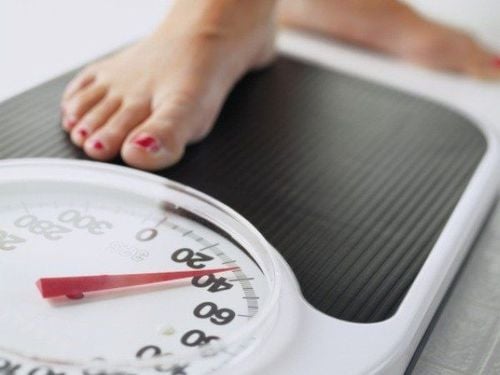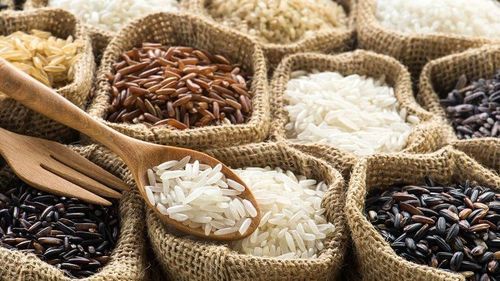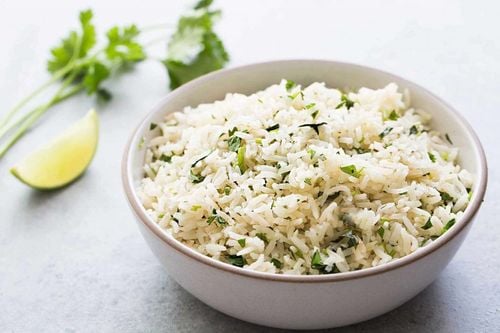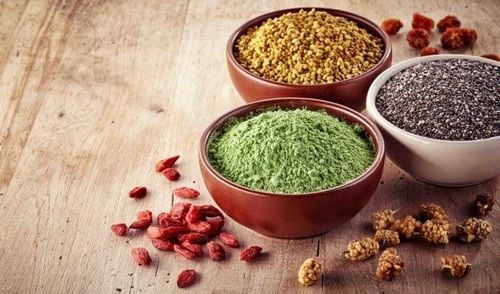This is an automatically translated article.
The White Food Replacement Diet, a popular dietary trend that focuses on eliminating white foods to aid weight loss and blood sugar balance. However, judging the quality of a food by color alone may not be the best way to determine if a food is healthy. Many white foods have high nutritional value and can be used to aid in weight loss. The article will give more information to explain this content.1. White food diet
The white food diet is an eating pattern founded on the notion that eliminating processed white foods from your diet can help you lose weight and improve control. blood sugar control.Advocates of white foods are not healthy, as many are highly processed, starchy and contain fewer nutrients than more colorful varieties.
Therefore, by eliminating white foods from your diet, you are said to have established yourself a more nutritious diet to promote weight loss and restore blood sugar balance.
Most health professionals will agree that basing your dietary choices strictly on the color of your food is a simplified way to approach good nutrition.
However, this dietary strategy may have some benefits, especially if it helps you reduce your consumption of highly processed foods in favor of more nutrient-dense ones.
2. White foods should be replaced
2.1. White Bread One of the main foods eliminated from the white food diet comes first: White bread, as well as closely related foods made with white flour, including crackers, cakes and breakfast cereals.When bread flour is refined, the germ and bran of the grains are removed - along with most of the fiber, vitamins and minerals contained within them - during the milling process, resulting in a product rich in carbs but low in calories. lack of other important nutrients such as fiber and protein.
Therefore, cutting back on white bread and similar refined grain products can make you more successful if your goal is weight loss.
You can replace it with a healthier food: whole grain bread. Whole grain breads, crackers and breakfast cereals are made from flour that contains the whole grain, including the germ and bran, which means the final product retains more of its natural nutritional value than the original. Its white, more delicate product. What's more, eating whole grain bread doesn't seem to have the same tendency to promote weight gain as white bread.
The improved nutritional profile and increased fiber content can also help limit the blood sugar response and improve satiety, making it easier to maintain the calories you need.
To reap these benefits, exchange your white bread for whole wheat bread and bread products that list a whole grain, such as whole wheat or oats, as an ingredient. The first part.
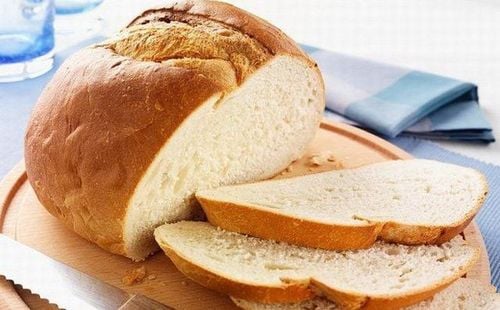
Bánh mì trắng là loại thực phẩm bạn nên loại bỏ khỏi thực đơn ăn kiêng
If you don't care about your portion sizes, you can easily eat too much at once, which can contribute to the consequences of being overweight while also leading to easy weight gain.
You can replace it with a healthier food: whole grain pasta. For a nutritional boost, choose whole grain pasta. Whole-grain pasta usually contains more fiber, which can make you feel fuller and more satisfied. Extra fiber can also help slow the body's digestion of carbs, aiding in improved blood sugar control.
You may also want to consider alternative pasta options, such as pasta made with legumes. Although the texture is slightly different, pasta made with legumes tends to have more protein and fiber than most grain pastas.
2.3. White rice Like white bread and pasta, white rice is a refined grain. White rice was originally a whole grain, but the bran and germ were removed during the milling process, turning it into the smooth, starchy white rice you're probably already familiar with.
White rice isn't inherently a bad or unhealthy food, but it doesn't contain much nutrition other than calories and carbs. The lack of fiber and protein also makes it very easy to overeat white rice, which can contribute to weight gain or blood sugar imbalances.
You can substitute with healthier food: Brown rice
Brown rice is the simplest, most obvious substitute for white rice. After all, brown rice is just white rice that hasn't been processed to the same extent.
It contains more fiber, vitamins and minerals than white rice, so you're getting more of what's essentially the same plant.
Furthermore, research has shown that brown rice affects blood sugar to a much lesser extent than white rice.
If you don't like brown rice or just want to change your habits, you can consider other whole grain options, such as black rice, quinoa or bulgur.
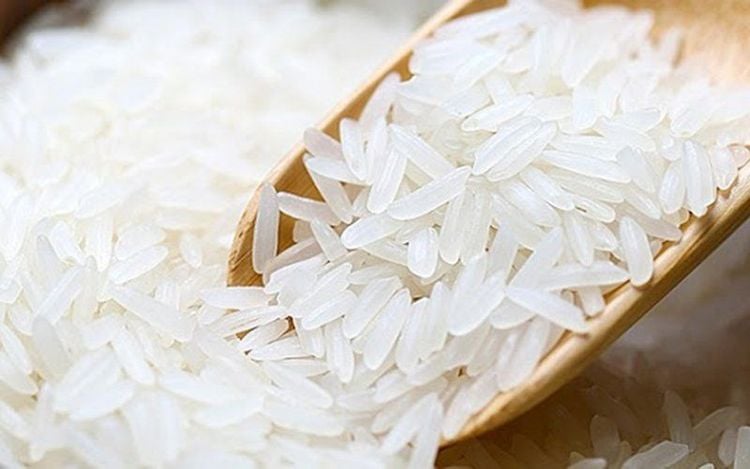
Bạn có thể thay thế gạo trắng bằng gạo lứt
Added sugars contain a lot of calories, even when serving sizes are kept relatively small, so it's easy to accidentally overconsume them. They've also been linked to negative health outcomes, for example. such as unwanted weight gain and increased risk of heart disease and type 2 diabetes .
You can replace it with a healthier food: fruit
If you love to eat sweets and find it difficult to eliminate added sugars from your diet, choose natural sources of sugar from food whole like fruit.
Fruit contains simple sugars that are chemically similar to added sugars. However, they are also packed with vitamins, minerals, fiber, and antioxidants – all of which help minimize the harm that can arise from consuming sugar on its own.
2.5. Salt Most people are familiar with table salt as a white food, but it also comes in other colors, such as pink, blue, and black. While some salt is essential for health, many people on the Western diet eat too much salt, with much of it coming from ultra-processed foods.
Eating too much salt has been linked to many negative health effects, including an increased risk of heart disease, stroke, obesity, and kidney disease.
The white food replacement diet emphasizes reducing salt intake from more processed sources, such as canned foods, condiments and prepackaged meals, many of which include possibility of containing other white foods prohibited in the diet.
You can substitute with healthier foods: colorful herbs and spices
Reducing your salt intake doesn't mean you have to live on unflavored foods.
On the contrary, you can try this as an opportunity to experiment with using a wider variety of herbs and spices in your cooking.
Herbs and spices tend to be concentrated sources of antioxidants, vitamins and minerals, which may play a role in reducing inflammation and regulating blood sugar levels
2.6. White Potatoes White potatoes are inherently unhealthy. But potatoes are excellent sources of several important nutrients, such as potassium, vitamin C and fiber. However, potatoes are still considered an unhealthy food, because in large part because of the way they are usually prepared.
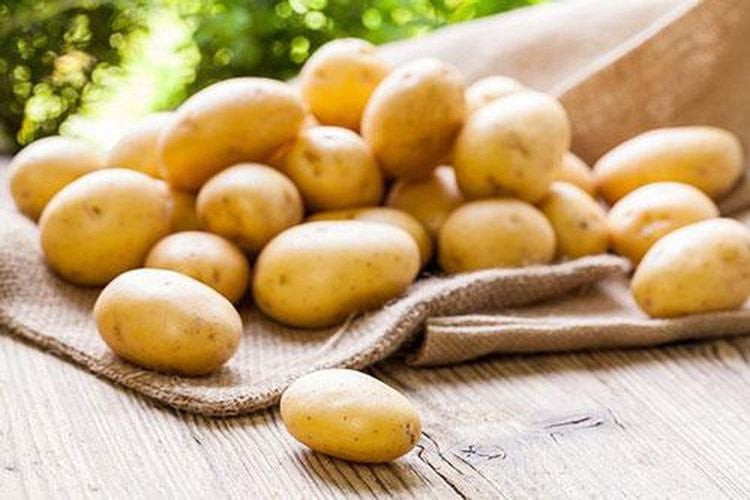
Bạn nên thay thế thực phẩm trắng như khoai tây bằng các loại rau củ nhiều màu
Furthermore, many modern dietary models rely on these white potato preparations as a staple vegetable while excluding other vegetables.
So if you regularly consume white potatoes as your main vegetable, swapping them for different colored vegetables can help you add a wider variety of nutrients to your diet. .
You can replace it with healthier foods: Colorful vegetables
When it comes to vegetables, variety is something to strive for.
Eating vegetables from a variety of color groups - including green, orange, yellow, red, purple and white - has been linked to a reduced risk of chronic diseases such as heart disease and colon cancer.
Starchy vegetables, such as orange sweet potatoes, purple potatoes, chickpeas and winter squash, are all great, colorful substitutes for white potatoes.
If you're trying to cut carbs, try swapping your potatoes for some non-starchy vegetables, such as asparagus, zucchini, leafy greens, tomatoes, carrots, bell peppers or cabbage.
2.7. Animal fats Most versions of the no white food diet treat animal fats as white foods and recommend that they be limited.
White animal fats mainly refer to fats that come from meat and dairy products, most of which are saturated fats.
The no white food diet recommends eating very lean meats and only fat-free dairy products. As with many other white foods, saturated fat is inherently unhealthy. However, eating a lot of them may contribute to high cholesterol and a higher risk of heart disease in some people.
You can replace it with healthier foods: Plant-based fats
When you replace saturated fats in your diet with plant-based unsaturated fats, you can reduce the risk of heart disease.
If a large portion of your daily fat intake regularly comes from saturated fats of animal origin, consider swapping some of these fats for vegetable fats, such as olive oil and butter.
You can also get more heart-healthy unsaturated fats from whole foods like nuts, seeds, avocados and olives.
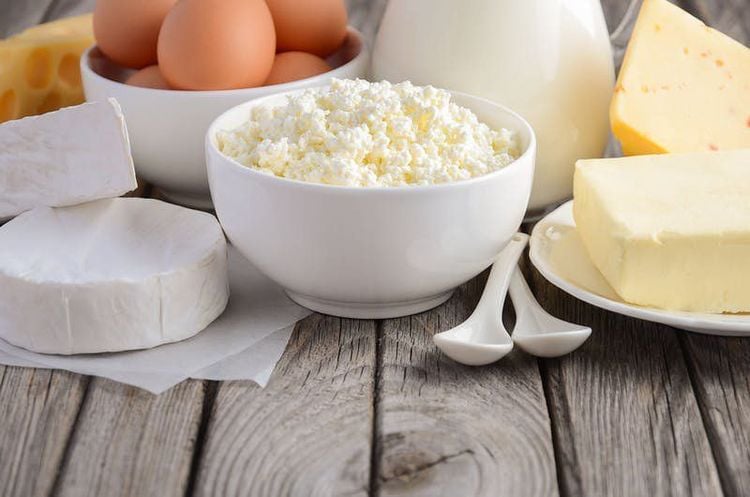
Chất béo có nguồn gốc động vật cũng được coi là thực phẩm trắng
3. Some white foods are good for health
The color of a food tells you very little about its nutritional value. So this weight loss method can be confusing for people who are simply trying to learn to make healthier food choices.Although some white foods are less nutritious than others - like refined grains and sugar - many foods are very healthy and certainly fit into any diet aimed at fortification. general health and weight loss.
Here are some examples of some nutritious white foods:
Vegetables: Cauliflower, onions, garlic, radishes, coriander, mushrooms Nuts: Cashews, sesame seeds, pine nuts Legumes: White beans Meat: White fish, poultry Milk: Milk, yogurt, cheese Others: Egg whites, coconut Notably, some versions of the White Food Diet have exceptions. for some white foods, such as fish, eggs, and poultry, but others are not.
Therefore, it is important to take a close look at what foods you are eliminating and why, as some of them can actually help you achieve your goals.
Please dial HOTLINE for more information or register for an appointment HERE. Download MyVinmec app to make appointments faster and to manage your bookings easily.
Reference source: healthline.com




